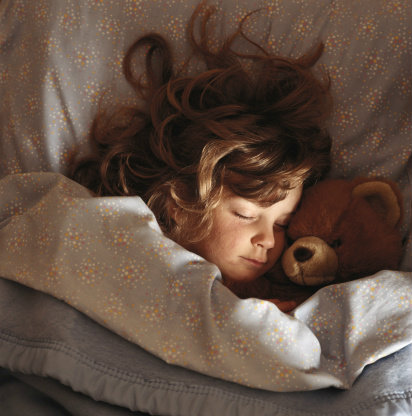 A well-rested child is also well-prepared to learn, and participate in and enjoy life. If your preschooler is struggling to fall asleep, there also might be behavior, mood and memory challenges. According to WebMD, children need at least nine hours of sleep per night for optimal living (with KidsHealth recommending 11 to 12 hours of sleep for preschoolers, which includes their naptime).
A well-rested child is also well-prepared to learn, and participate in and enjoy life. If your preschooler is struggling to fall asleep, there also might be behavior, mood and memory challenges. According to WebMD, children need at least nine hours of sleep per night for optimal living (with KidsHealth recommending 11 to 12 hours of sleep for preschoolers, which includes their naptime).
So here are some tips to help your child – and you – get a much better night’s sleep.
First, as Mayo Clinic points out, if you feel rushed when you put your child to bed, all can feel tense or chaotic, and your child will pick up on those cues. So create a predictable and calm pre-bedtime routine that will help ease your child into sleep. For example, avoid overly active play in the evenings; instead, read stories, play soothing music or give your child a warm bath. Tuck your child into bed in a reassuringly consistent way.
Or perhaps your child is actively trying to fight sleep, wanting to stay up and play. If so, quiet the house so that he or she won’t feel as though it’s still time for fun activities. This means turning the television and computer down or off, and dimming the lights. If your child expresses fear about the dark, which isn’t unusual for preschoolers, turn on a night-light.
WebMD offers additional tips:
- Keep consistent waking times, even on weekends. Waking times on Saturdays and Sundays should not vary from weekdays by more than an hour or 90 minutes.
- Avoid caffeine in food or drink in the six hours before bedtime; remember that chocolate milk and dark chocolate contain caffeine.
- Make sure the temperature is comfortable in your child’s bedroom.
Additional tips from KidsHealth include:
- Alert your child of his or her bedtime 30 minutes and then 10 minutes beforehand, so that he or she can mentally prepare.
- Don’t allow your child to play on or watch television on the bed; the idea is for your child to associate the bed with sleeping.
- Allow your child to choose which pajamas to wear and which stuffed animal can come with him or her to bed.
Finally, here are suggestions from Parents.com:
- To help extinguish fears of the dark, play safe and fun games in the daytime that involve the dark. One example is to turn off the lights when you are right beside your child, give him or her a flashlight – and then issue a challenge to find, say, three stuffed animals. As your child becomes comfortable with this type of game, have him or her try it while alone.
- If your child uses delay tactics like requests for a glass of water or bathroom usage, issue two passes per night. One is good for a hug and the other can be used for either a drink or a bathroom visit. Whenever your child has passes left over from the previous night, reward him or her. Note: If your child truly does seem to need to use the bathroom more frequently, ask your pediatrician for advice.
If your preschooler still struggles with sleep issues after trying these tips or if they seem especially severe, talk to your pediatrician. Some children experience separation anxiety or have unpleasant dreams and it’s important to address these appropriately.
Looking for more ways to enrich your child’s learning and life? Horizon Education Centers provides affordable quality care, including educational and enrichment opportunities for children in the following Northeast Ohio locations.







